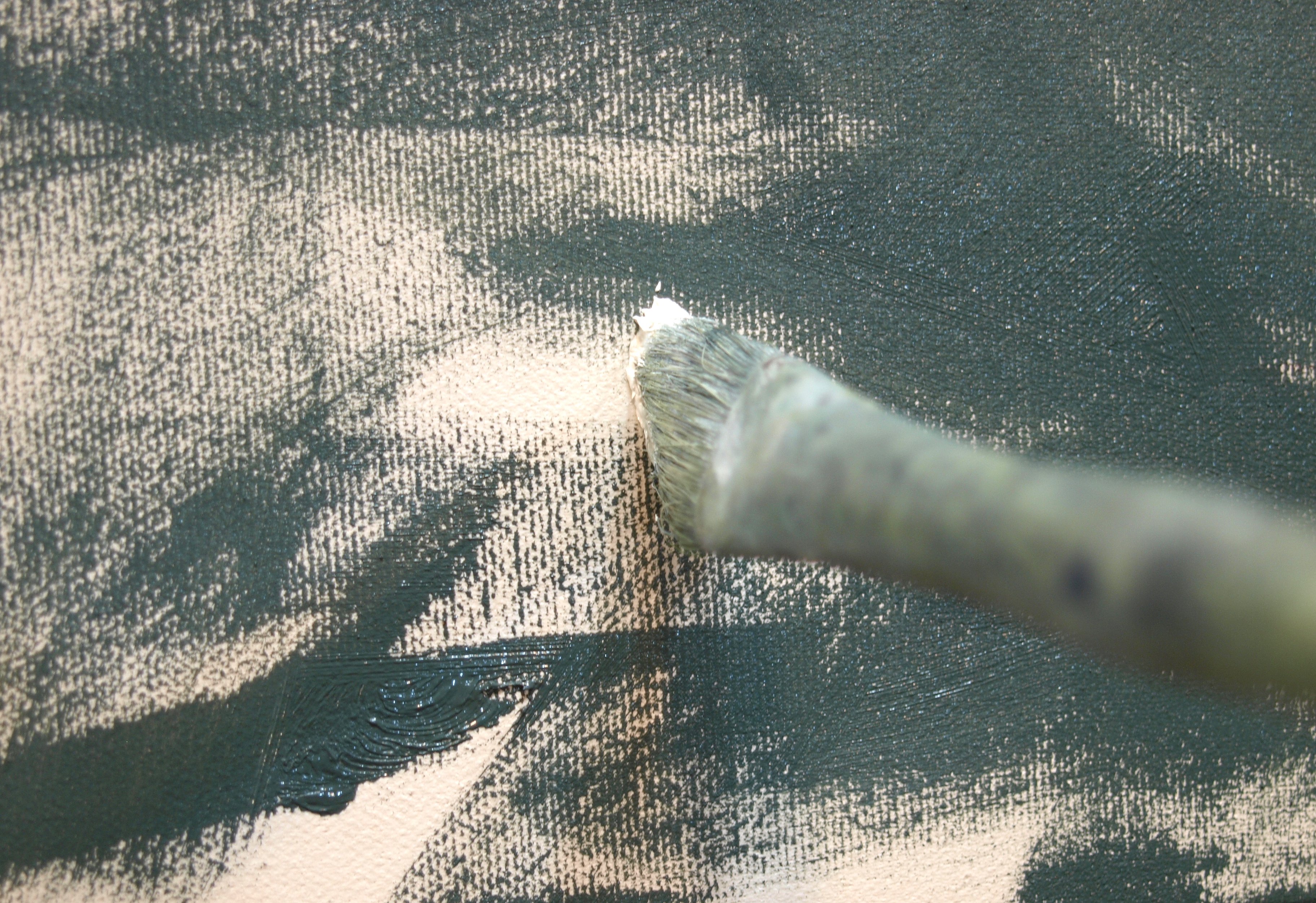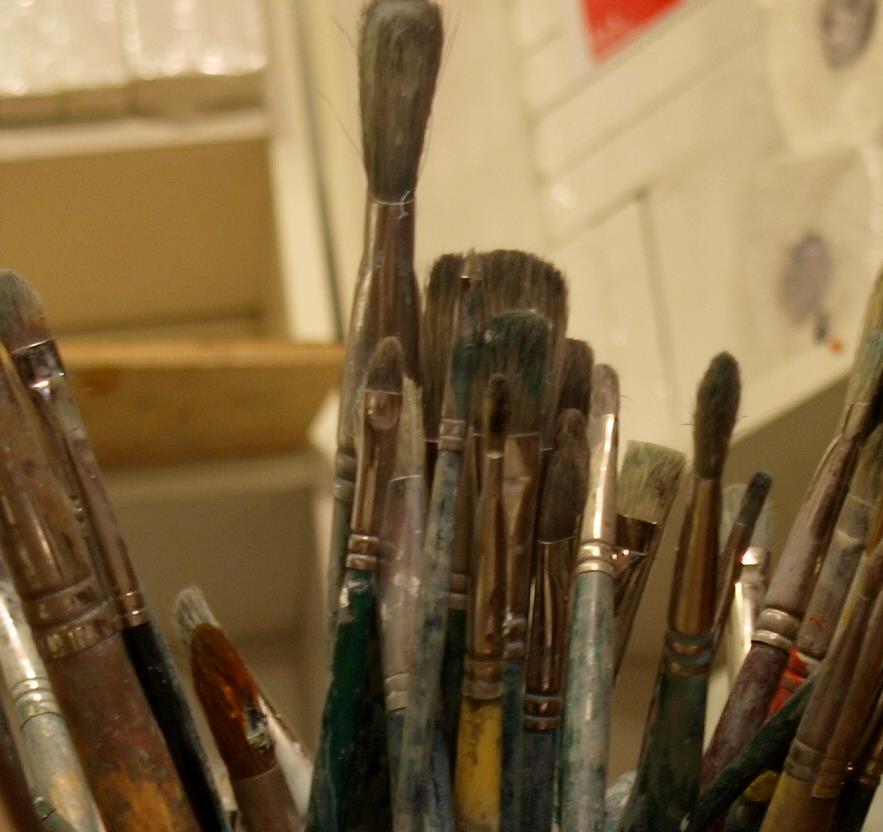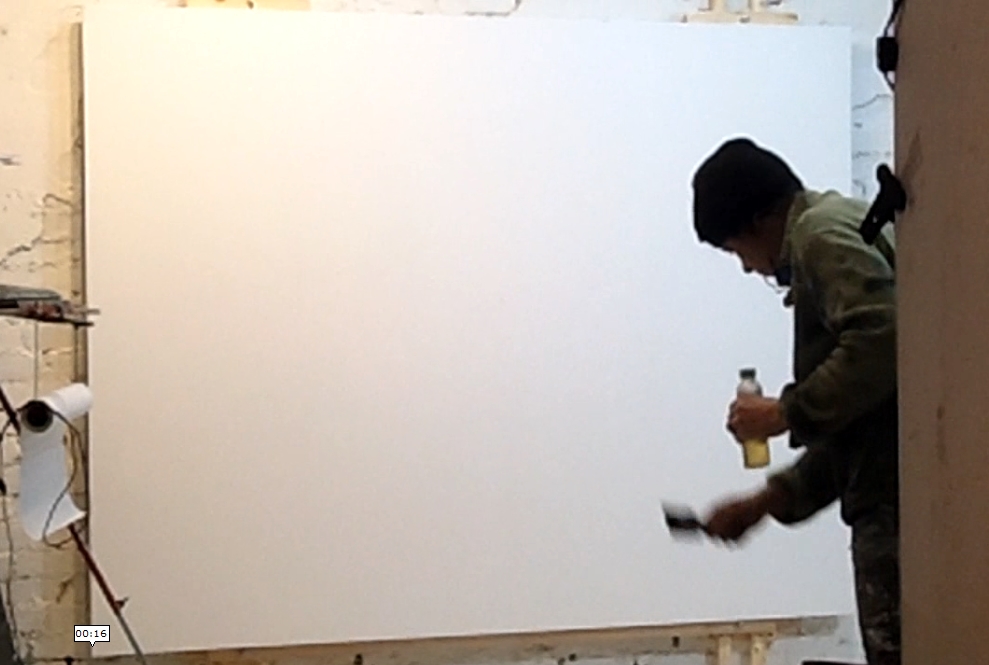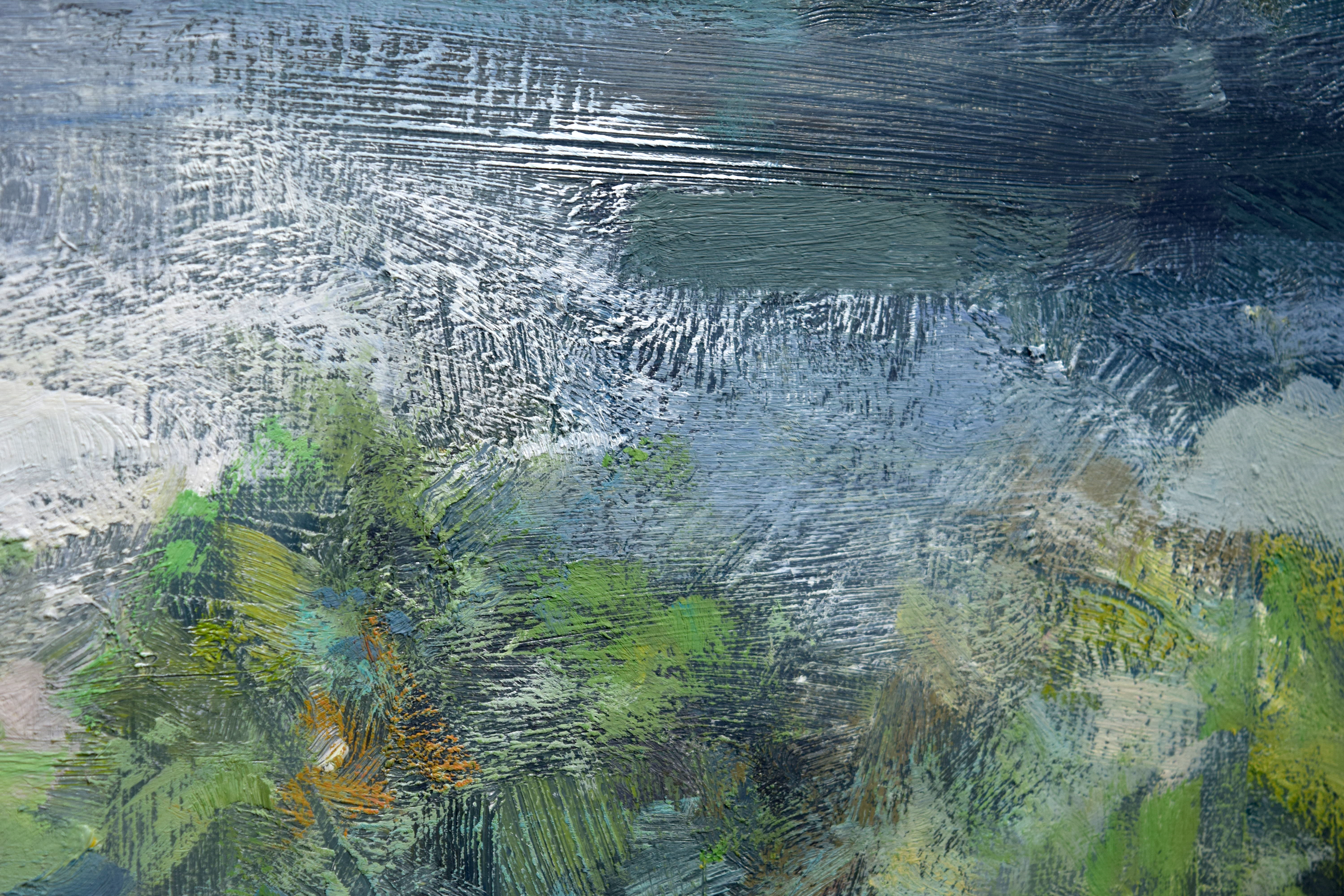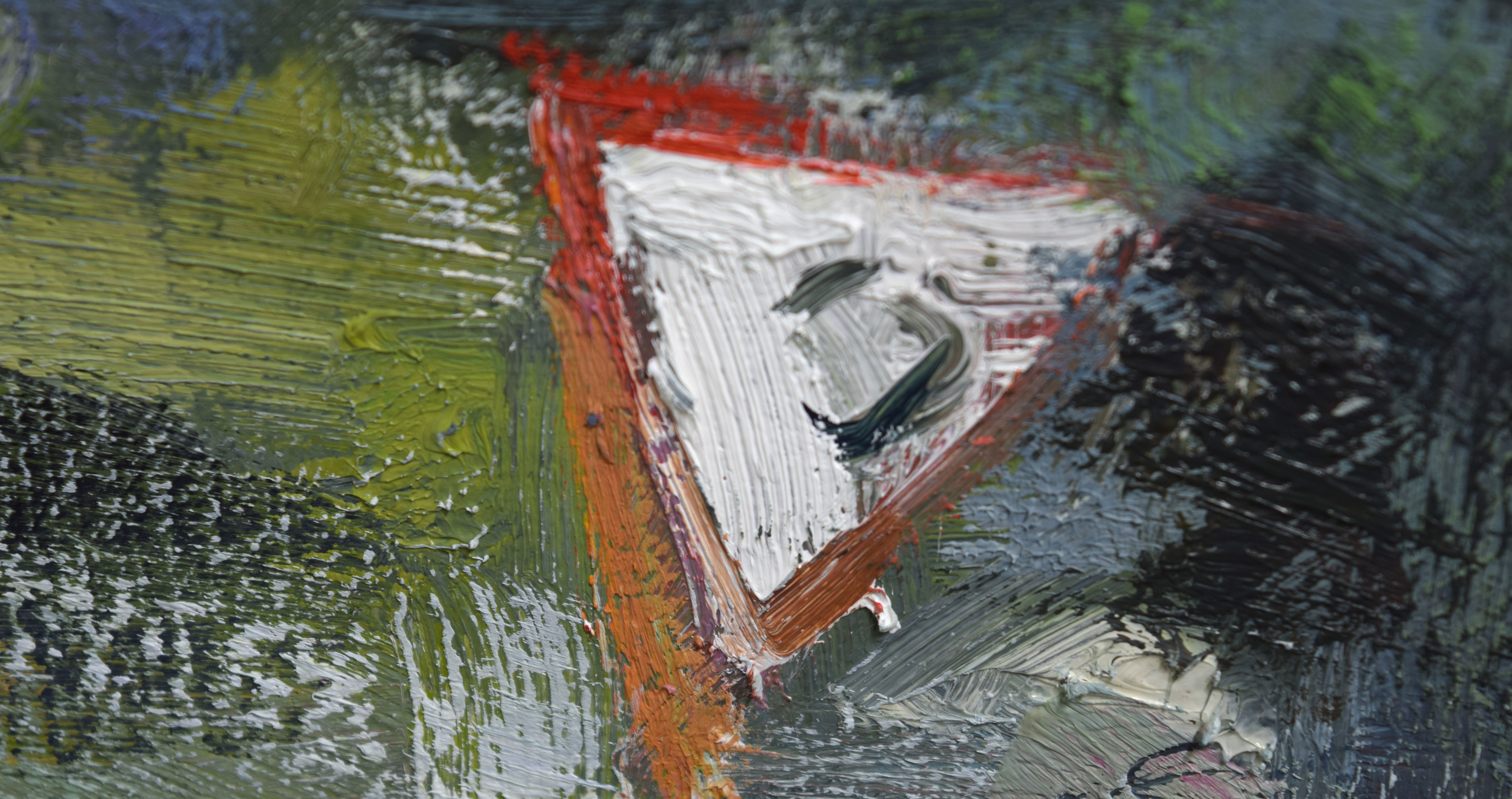Once you have moved through the opening moments in your painting, you will have the need to build – time for Descriptive brushstrokes. I used to think of emotive and descriptive brushstrokes as 2 separate categories but I’ve realized that emotive is really a characteristic of the descriptive. It is a way of laying down the paint so that the mark carries the emotional content of the description.
Descriptive brushstroke defines the elements in your painting but it is not drawing, it is moulding the elements out of the surface of the canvas. Another way to think about descriptive strokes is that you are laying down your paint in a way that reveals the elements as opposed to imposing them on the canvas. To understand the idea of moulding it is important to remember that the other person, the 50% part in this 3 way relationship, is your viewer and you need to engage them to complete the painting. To engage your viewer, allow enough space in the painting for them to start their relationship, do this by using your descriptive brushstrokes to give enough information about the element so that the viewer can use their imagination to complete it.
Engage your viewer by signalling to them that the painting is more than an object to consume but is a tool of translation. You signal by keeping your marks loose and the easiest way to do this is to use one stroke instead of two. If you present the other person with a tightly rendered painting, your signal is that there is no work to be done because you have left no entry into the painting. Use simple, seductive brushwork and the viewer will instinctively engage and will naturally complete the element because we have a highly developed ability to recognize pattern where none exists. This is known as Pareidolia and it is the reason we see faces in rocks and animals in clouds and why we imbue these inanimate objects with intention as to whether they are friendly or not
There is a level of sophistication with your mark making that you need to achieve but keep adding to your tool box and pay attention to what happens when you place the marks on the canvas and you will understand how to improve your sophistication.
Descriptive marks work towards describing elements in the simplest way possible while at all times paying attention to evoking the feeling that you want them to evoke. When describing a tree you have many choices, there are long strokes, small strokes, squiggly strokes, smudgy strokes, strokes that start abruptly on the canvas and those that wisp their way through the canvas or a combination of all of them. In deciding what decisions to make also consider the concept of your painting as this helps you gauge which direction to take as each descriptive marks evokes a different feeling so what feeling are you looking for?
Descriptive marks should not be self contained, remember that you are building a magical tapestry that engages the 50% part of the painting – your viewer and this means building strong foundations, so let the marks break into each other. You can always choose to simplify and area later but you cannot build a tapestry at the end.
Your descriptive brushstrokes should have a paint load that is relevant to the mark that you want to make and your brush size will be decided by this mark as well. One stroke instead of two, so if you can’t so this with your brush check that you have enough paint on your brush and that your brush is large enough. Notice that I didn’t say thin enough as this is rarely a problem as one brush contains a multitude of marks. We will come to this later but for now consider how a filbert or a flat can in the same stroke move from thick to a whispy thin simply with a flick.
Pay attention to how your stroke starts and finishes.

